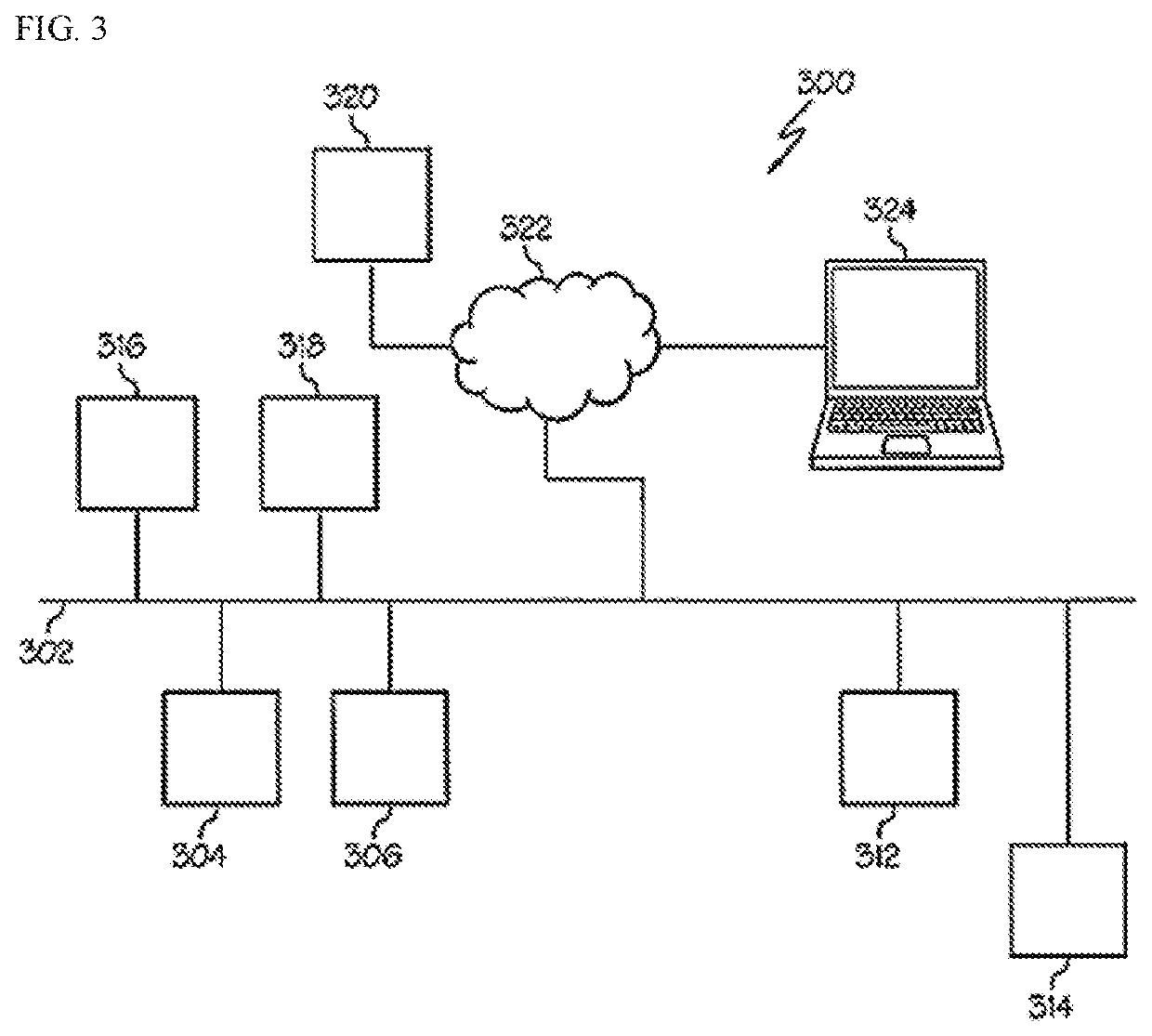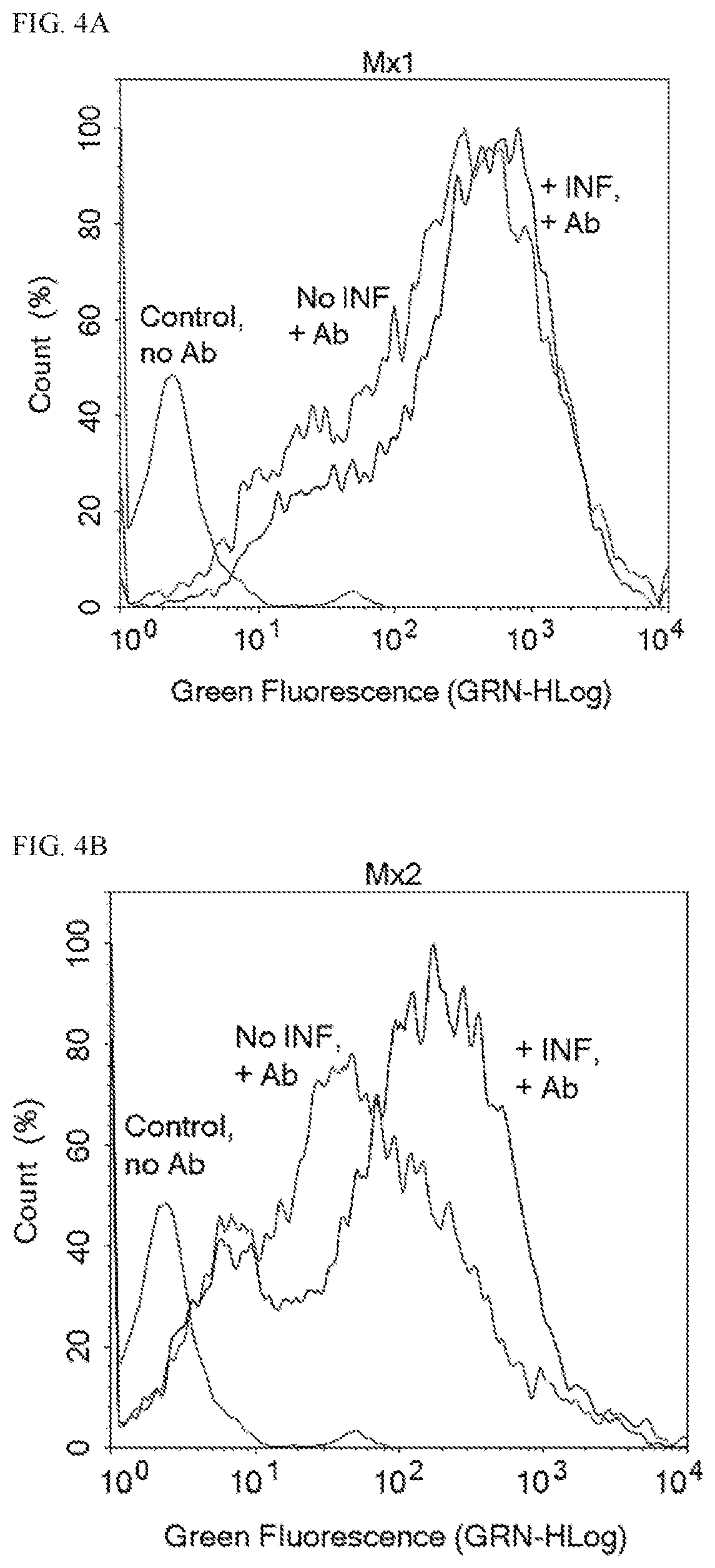Methods for improved reproductive management of ruminant ungulates
a technology for ungulates and ruminants, applied in the field of methods for improving the management of ruminant ungulates, can solve the problems of affecting the ability to measure interferon-induced analytes, reducing the probability that interferon-induced analytes will degrade, aggregate or unfold before detection,
- Summary
- Abstract
- Description
- Claims
- Application Information
AI Technical Summary
Benefits of technology
Problems solved by technology
Method used
Image
Examples
example 1
eparation Via In Vitro Treatment for Analysis
[0165]Bovine blood was drawn and fractionated by centrifugation. The buffy coat fraction was isolated from other blood fractions, and leukocytes of the buffy coat were incubated for 24 hours with or without INF-τ. The leukocytes were then fixed and frozen. Leukocytes were thawed and then contacted with 3 μg / mL of a primary antibody against either Mx1, Mx2, or ISG15 and then contacted with 5 μg / mL of a fluorescently-labeled secondary antibody. All incubations and wash steps were performed in Perm / Wash™ buffer (BD Biosciences). Cells were counted by flow cytometry. FIG. 4A-4C show flow cytometry plots for three antibodies.
[0166]FIG. 4A shows an overlay of three flow cytometry traces in which the x-axis corresponds to the relative fluorescence intensity of a secondary antibody and the y-axis corresponds to relative cell count. The left-most flow cytometry trace corresponds to a control sample that was not contacted with the secondary antibod...
example 2
eparation Via In Vivo Treatment for Analysis
[0169]0.1 mL blood is obtained from a female ruminant ungulate, and the blood is added to a vial containing 4% paraformaldehyde as a fixative (or other fixative such as CytoFix™ (BD Biosciences) or TransFix® (Cytomark)). The fixation reaction is optionally quenched with borohydride depending on the nature of the fixative. The biological sample is then stored for 24 hours at 4° C. The cells of the biological sample are washed and then resuspended in Perm / Wash™ (BD Biosciences) or other detergent such as 1% saponin or 1% Triton X-100. The fixed, permeabilized cells are pelleted and resuspended in blocking buffer. The cells are either pelleted and resuspended in a solution containing a primary antibody (which targets an interferon-induced analyte) and then pelleted and resuspended in a solution containing a secondary antibody (which targets the primary antibody), or the cells are pelleted and resuspended in a solution containing a fluorescent...
example 3
ation of Suitable Blocking Buffers
[0170]A number of blocking buffers were screened according to a protocol similar to Example 1 including 12 blocking buffers provided by SurModics and various blocking buffers containing 4% fetal bovine serum, 1% w / v saponin, and 0-20% goat serum in PBS. The blocking buffers were screened in combination with two different anti-ISG15 antibodies and two different secondary antibodies. Two proprietary blocking buffers obtained from SurModics containing either casein base or milk base were found effective for use with the specific primary anti-ISG15 antibodies and the specific secondary antibodies. 10 proprietary blocking buffers were found ineffective for use with both cow leukocytes and the specific antibodies that were analyzed. Each blocking buffer containing 4% fetal bovine serum, 1% w / v saponin, and 0-20% goat serum in PBS was found effective for use with specific primary anti-ISG15 antibodies and secondary antibodies.
PUM
 Login to View More
Login to View More Abstract
Description
Claims
Application Information
 Login to View More
Login to View More - R&D
- Intellectual Property
- Life Sciences
- Materials
- Tech Scout
- Unparalleled Data Quality
- Higher Quality Content
- 60% Fewer Hallucinations
Browse by: Latest US Patents, China's latest patents, Technical Efficacy Thesaurus, Application Domain, Technology Topic, Popular Technical Reports.
© 2025 PatSnap. All rights reserved.Legal|Privacy policy|Modern Slavery Act Transparency Statement|Sitemap|About US| Contact US: help@patsnap.com



